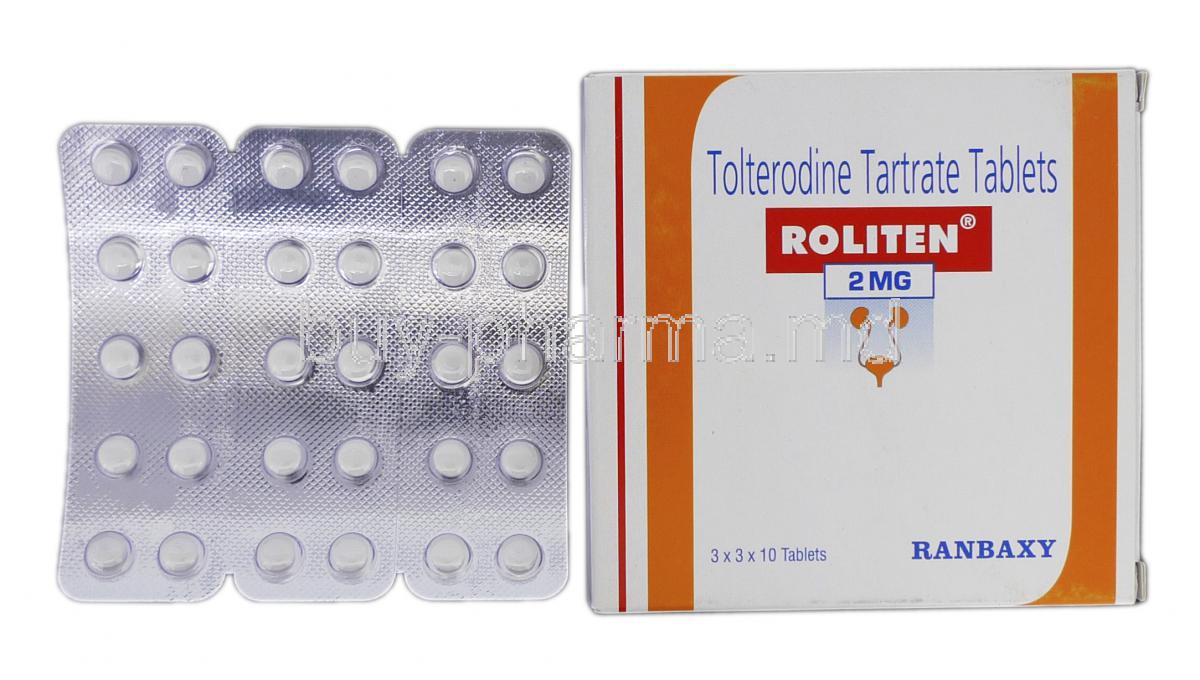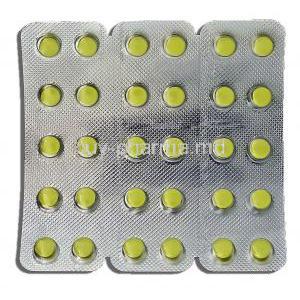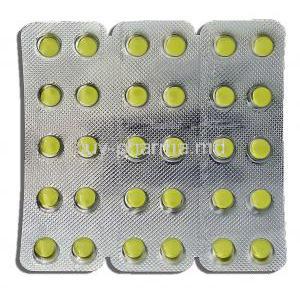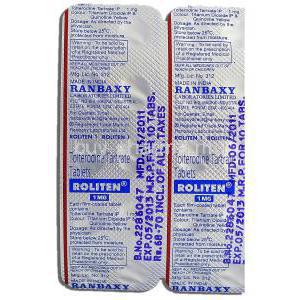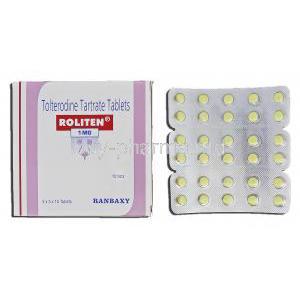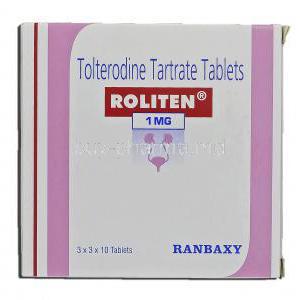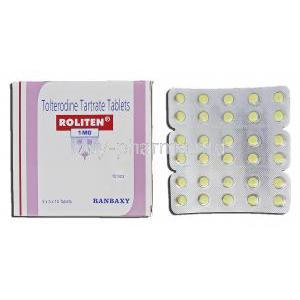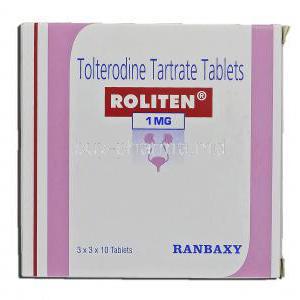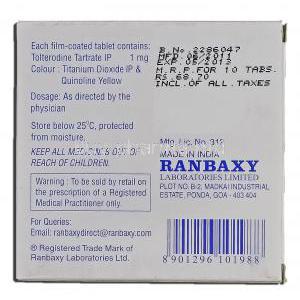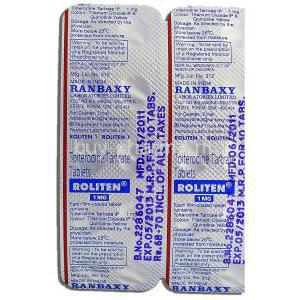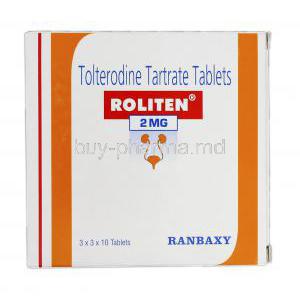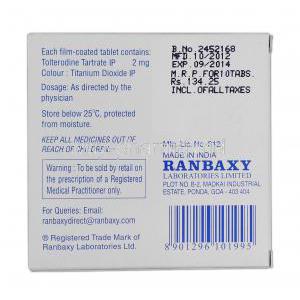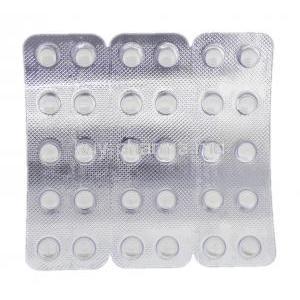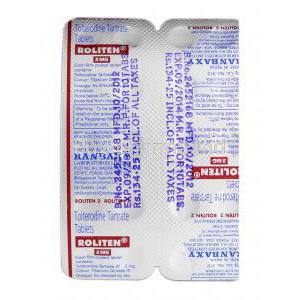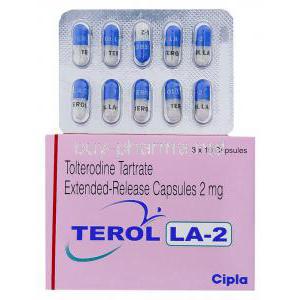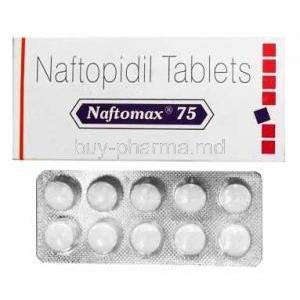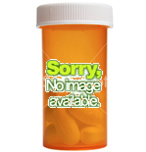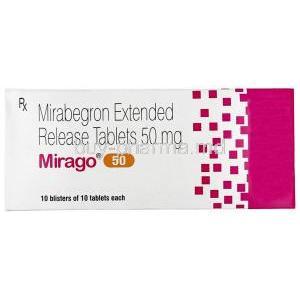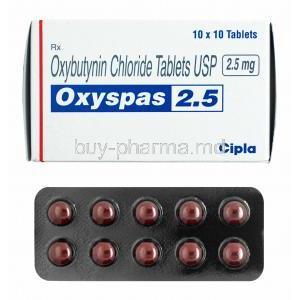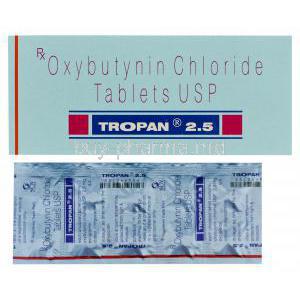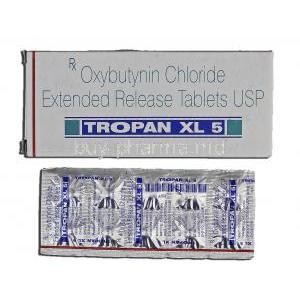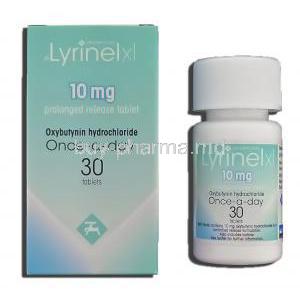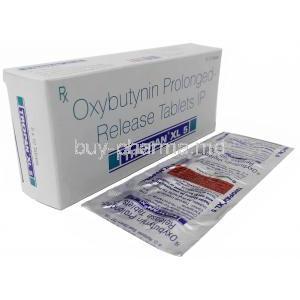Introduction to Roliten (Tolterodine Tartrate)
Roliten, containing the active pharmaceutical ingredient Tolterodine Tartrate, is a clinically proven antimuscarinic agent used to alleviate urinary storage symptoms. It acts by modulating overactive bladder activity, thereby improving patient quality of life. Available under various brand names globally, it is also marketed in generic formulations to improve accessibility. Classified therapeutically as a urinary antispasmodic, its significance lies in effectively reducing involuntary detrusor muscle contractions. Since its initial approval in the late 1990s, Roliten has maintained a strong presence in multiple international markets, supported by extensive clinical evidence.
Medical Uses of Roliten
2.1 FDA-Approved Indications
- Overactive bladder (OAB) – Addresses key symptoms including urinary frequency, urgency, and urge incontinence.
- Neurogenic detrusor overactivity – Provides symptomatic relief for select neurological conditions affecting bladder control.
2.2 Additional Therapeutic Applications
- Adjunct in managing detrusor overactivity associated with multiple sclerosis or spinal cord injuries.
- Relief of persistent urinary symptoms following prostate surgery.
Off-Label Uses of Tolterodine Tartrate
Although primarily indicated for OAB, Tolterodine Tartrate has been investigated for additional roles in clinical practice:
- Management of pediatric overactive bladder when conventional therapies fail.
- Treatment of nocturia in older adults to improve sleep quality.
- Supportive therapy in interstitial cystitis and bladder pain syndrome to reduce urgency and discomfort.
- Reduction of urinary urgency in patients with benign prostatic hyperplasia (BPH).
How Roliten Works (Mechanism of Action)
Roliten functions as a competitive muscarinic receptor antagonist, selectively inhibiting M2 and M3 receptors in the bladder. This action attenuates involuntary smooth muscle contractions, thereby increasing bladder capacity and delaying the urge to void. It exhibits partial central nervous system penetration, contributing to both therapeutic and side effect profiles. Compared to other antimuscarinics, Tolterodine offers a balanced efficacy–tolerability ratio, making it a preferred choice for long-term management of OAB.
Composition and Available Formulations
- Active ingredient: Tolterodine Tartrate.
- Excipients: Lactose monohydrate, povidone, magnesium stearate, and other stabilizers.
- Dosage forms: Immediate-release tablets and extended-release capsules.
- Strengths: Commonly available in 1 mg and 2 mg tablets, and 4 mg extended-release capsules.
- Packaging sizes vary according to regional regulatory standards.
Dosage and Administration Guidelines
6.1 Adult Dosage
Standard dosing for OAB begins at 2 mg twice daily in immediate-release form, or 4 mg once daily in extended-release form. Dose reductions to 1 mg twice daily may be warranted for tolerability.
6.2 Special Dosage Considerations
- Renal impairment: Reduced clearance necessitates lower dosing.
- Hepatic impairment: Caution with significant reduction in dosage due to altered metabolism.
- Adjustments may be needed when co-administered with potent CYP3A4 inhibitors.
6.3 Administration Instructions
- May be taken with or without food.
- If a dose is missed, take it as soon as remembered unless it is close to the next scheduled dose.
Side Effects of Roliten
7.1 Common Side Effects
- Dry mouth
- Constipation
- Blurred vision
- Dizziness
- Headache
- Dyspepsia
- Mild urinary retention
7.2 Less Common but Clinically Significant Effects
- Prolongation of the QT interval
- Confusion and memory disturbances in elderly patients
- Severe hypersensitivity reactions including angioedema
Drug Interactions
- Potent CYP3A4 inhibitors such as ketoconazole and clarithromycin can elevate drug levels.
- CYP2D6 metabolic pathway interactions may necessitate dosing changes.
- Concomitant use with other anticholinergic drugs can enhance adverse effects.
- Agents affecting cardiac conduction may increase arrhythmia risk.
Warnings and Safety Precautions
- Monitor for urinary retention, particularly in patients with bladder outlet obstruction.
- Risk of heat prostration in hot environments due to decreased sweating.
- Use with caution in narrow-angle glaucoma.
- Monitor for central nervous system side effects such as dizziness or confusion, especially in elderly patients.
Contraindications
Roliten (Tolterodine Tartrate) should not be administered in certain clinical scenarios where the potential risks outweigh therapeutic benefits. The following conditions represent absolute contraindications:
- Known hypersensitivity to tolterodine or any component of the formulation, including excipients, due to the risk of severe allergic reactions.
- Urinary retention in patients with significant bladder outlet obstruction, as antimuscarinic action may exacerbate the inability to void.
- Uncontrolled narrow-angle glaucoma, where mydriatic effects may precipitate an acute rise in intraocular pressure.
- Severe gastric retention associated with conditions such as pyloric stenosis, which can worsen under anticholinergic influence.
Careful Administration and Important Precautions
Certain patient populations require meticulous dose titration and continuous clinical monitoring to prevent adverse outcomes:
- Hepatic or renal impairment – Reduced metabolic clearance necessitates lower dosing to prevent accumulation and toxicity.
- Bladder outlet obstruction – Monitor for progressive urinary retention and initiate therapy cautiously.
- Prolonged QT interval risk – Patients with existing cardiac conduction abnormalities require ECG monitoring during therapy.
- Concurrent strong anticholinergic therapy – Co-administration may intensify side effects such as constipation, xerostomia, and cognitive impairment.
Use in Special Populations
12.1 Administration to Elderly Patients
Elderly individuals exhibit heightened sensitivity to both cognitive and peripheral anticholinergic effects. Therapy should commence with the lowest effective dose, with periodic assessment for confusion, dizziness, and constipation. Polypharmacy common in this group mandates vigilance for drug–drug interactions.
12.2 Administration to Pregnant Women
Classified under pregnancy category C, tolterodine has demonstrated adverse fetal effects in animal studies, though adequate human data are lacking. Use is only justified when anticipated benefits clearly outweigh potential risks. Clinical decisions should be individualized, factoring in maternal symptom severity and alternative treatment options.
12.3 Administration to Nursing Mothers
Tolterodine and its metabolites may be excreted into breast milk, posing potential risks to the infant, including anticholinergic effects. Consider discontinuing the drug or nursing, depending on the importance of therapy to the mother.
12.4 Administration to Children
In pediatric patients, evidence supports selective use in overactive bladder when behavioral interventions are insufficient. Recommended dosing must align with age, weight, and renal function, accompanied by close monitoring for side effects such as dry mouth, constipation, and behavioral changes.
Overdosage and Emergency Management
Exceeding the recommended dose can result in pronounced antimuscarinic toxicity. Manifestations may include:
- Severe dry mouth and blurred vision
- Tachycardia and cardiac rhythm disturbances
- Marked urinary retention
- Confusion, agitation, or hallucinations
Emergency intervention entails prompt supportive care. Administer activated charcoal if ingestion is recent, followed by gastric lavage when clinically appropriate. Continuous cardiac monitoring is advised to detect and manage arrhythmias promptly. Intravenous fluids, electrolyte correction, and symptomatic therapy should be tailored to the patient's condition.
Storage and Handling Precautions
- Store at controlled room temperature, ideally between 15°C and 30°C.
- Protect from excessive moisture and direct light to maintain potency.
- Adhere to the product’s shelf life and dispose of expired medication according to local pharmaceutical waste guidelines.
- Keep out of reach of children and pets to prevent accidental ingestion.

